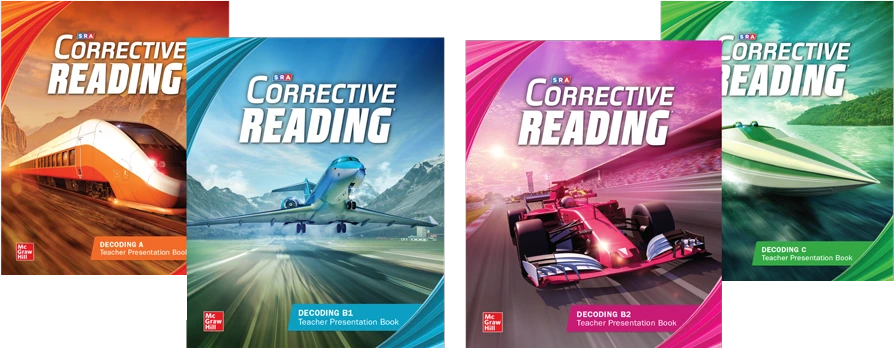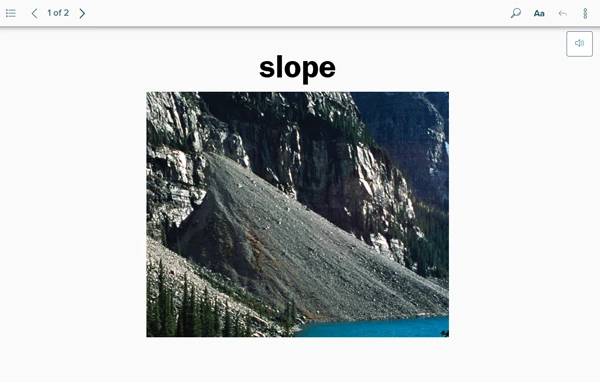We updated the scope and sequence to be more robust for certain skills, such as more vowel mechanics work in level B1. We also focused on improving accessibility and reimagining some of our practice activities by leveraging the McGraw Hill digital learning platform, where the online elements of Corrective Reading © 2027 will be housed.
Corrective Reading, like any Direct Instruction program, has been aligned to the Science of Reading long before it was called the Science of Reading! But evidence is still evolving around the role of knowledge building in comprehension. How will this new edition of Corrective Reading support building background knowledge?
Kia: The informational passages we’ve added will be a powerful contributor to students’ background knowledge. The program authors who worked on those passages have a deep understanding of knowledge building, because they have also authored other Direct Instruction programs where knowledge building is prioritized.
Additionally, before students read those informational passages, they get a chance to build background with vocabulary work, with the knowledge they need to be successful, and they'll sometimes read it more than once. Informational passages are also the only texts where we leverage images for students, to assist in that background knowledge. Where relevant, we include elements specific to informational texts – such as maps.
Classrooms are increasingly diverse, and more teachers find themselves tasked with supporting multilingual learners (MLLs). What changes have been made to Corrective Reading to better support a changing population?
Kia: We’re often asked if Corrective Reading is appropriate for MLLs. It absolutely is, because we know that students who have multiple languages come with their own knowledge in their first language, right? But in order for them to read English, they need very explicit, systematic instruction. The Direct Instruction pedagogy is an excellent fit for MLLs.
Vocabulary is also very important for MLLs. As they’re learning phonics skills, they’re also taking in an immense amount of new vocabulary. That's why we've added multimodal group display features, so our MLLs (and all students) can visually see what a word means.
Beyond decoding and vocabulary, writing and comprehension are also important for MLLs. While Corrective Reading doesn’t have a formal writing component, students have opportunities to write and refine comprehension strategies that they can carry into their core reading classes.
Importantly, every element of the program we’ve discussed in relation to MLLs will also be powerful for our other students, too.
How have we improved the teacher experience in this edition of Corrective Reading?
Kia: While the scripting has stayed the same – which is a central element of DI pedagogy – teachers have increased choice in selecting digital vs. print options. We've also provided a key, so that teachers (especially new teachers!) will be able to navigate the material quickly and always understand the significance of every element of their scripts.
We’ve also made the scripts more robust. For example, previously the teacher support might just say, “repeat until firm.” We've now scripted out all direction, so that teachers don't miss any instruction.
Corrective Reading © 2027 also provides really powerful tools for differentiation and data-driven teaching. Previously when students took their mastery test, teachers would review scores and reteach exercises based on failed criteria. Now, teachers will be directed to re-teach at an individual skill level – for example, saying the long E – and be provided with lessons and exercises specific to that skill. Every mastery test has a remedy lesson, and that remedy lesson includes specific exercises for teachers to reteach and an additional worksheet for students.
Corrective Reading is beloved by so many teachers and students and has been for decades. Can you give us some insight into what is NOT changing in the 2027 copyright?
Kia: Corrective Reading still utilizes the DI pedagogy, so all the things that you love about DI, 80% review, 20% new; the script, those are all still there.
And of course, no matter how you feel about the script, I think we're in a stage in education where we have so many kids now need intervention, and we have wide range of people that are teaching it, it’s important to remember how impactful the consistent language is for kids and how helpful the script is for teachers, especially those who are new to teaching or to intervention.
The consistency in the DI pedagogy also means students will continue to get that valuable time with their teachers while using Corrective Reading.
When I was training teachers on the program, I used to tell them: You're the difference maker. You're the differentiator. I still believe that about Corrective Reading. It accelerates students’ reading proficiency with explicit instruction in foundational skills, of course, but also because it gives teachers these valuable moments to prove to students that they can be successful.
Corrective Reading © 2027 will be available for purchase in the 2026 back to school season.




